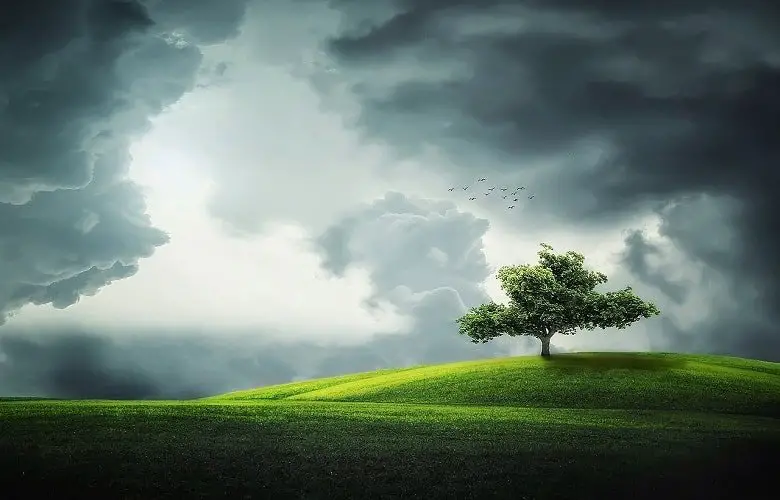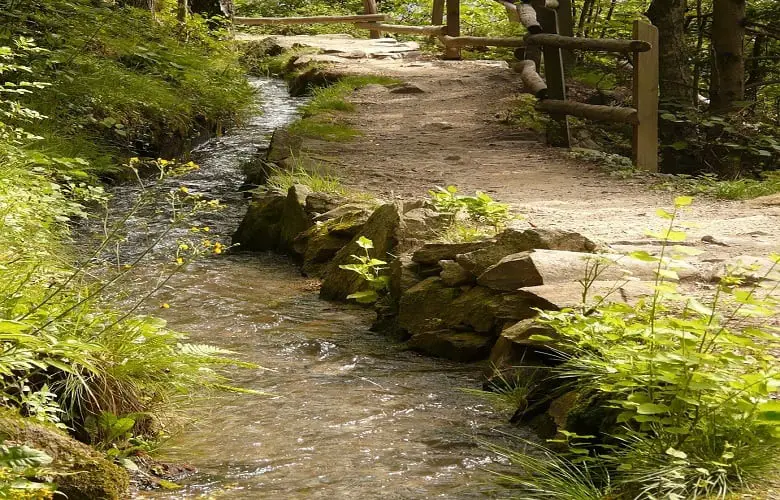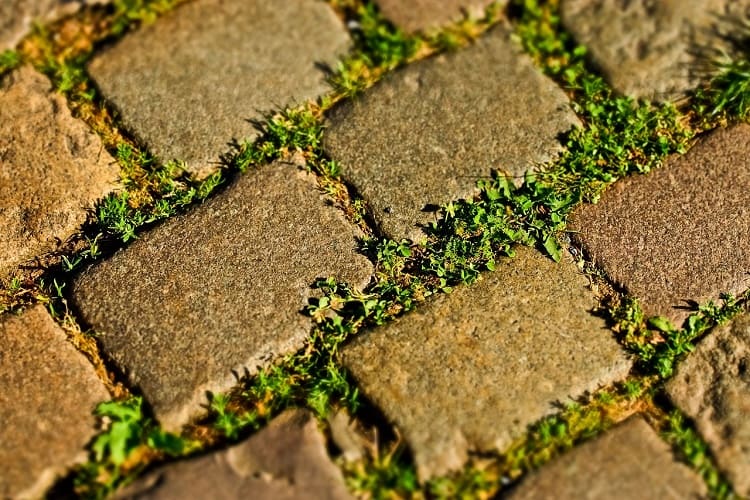In this article, I will take you through several ways on how to divert water runoff from neighbor’s yard to your property, the effects and factors facilitating such runoffs.
Runoff water is water that flows over the land as surface water. It occurs when the earth can no longer absorb any more water.
Water runoff can result from either natural processes like snowmelt, rain, or human activity such as irrigation and factory discharge.
Water draining from an uphill neighbor and puddling into your yard can be frustrating and expensive if not taken care of.
It is on this note; I will take you through various approaches to slow down or divert water runoff from neighbor’s yard depending on the situation to protect your property.
Read more on How To Stop Birds From Pooping On Your Car When Parked: A Full Guide
Factors Affecting Water Runoff From Neighbor’s Yard
There are various apparent reasons for water runoff from your neighbor to your yard. They include but not limited to:
Landscaping

Alteration of a landscape by your neighbor can redirect water flow down to your yard.
Some neighbors do not keep their lawns well; as a result, the gardens get eroded, which means they cannot contain any water no more.
Other neighbors pour concrete deck, thus eliminating natural surfaces that water sip in.
The Amount Of Vegetation
Plants require water to survive. Runoff is less in highly vegetated regions since the plants use the water instead of just flowing on the surface.
The roots of plants are designed in such a way that they can absorb water from the soil.
Read more on How To Do Away With Neighbors Cats In The Yard: A Full Guide
The Amount Of Rainfall

If it rains heavily or snow melts within a short period, runoff is likely to occur, meaning the amount of rainfall is directly related to the amount of flow.
Permeability Of The Surface
If the surface around your neighborhood cannot absorb much rainwater, then water runoff is inevitable.
The ability of your neighborhood soil to absorb water is critical.
For instance, if you poured water into the sandy soil, it sinks instantly, but if you pour into the surface with concrete-like car wash, the water runs off into the water collection point or roadside.
So, if your neighbor has cemented his lawn, it is likely water will run down to your property, since no surface to absorb it.
The Sloppiness Of The Area

If your property is downhill in a neighborhood, runoff water will, without a doubt, find you.
Steeper surfaces facilitate a faster flow of water down the hill, while flat areas give time for the surface to absorb the water.
Effects Of Water Runoff From Neighbor’s Yard.
In as much as water is essential in our lives, too much of it can cause damages to property owners.
It can start as a small inconvenience or loss worth thousands of dollars.
Below are some of the effects of runoff water, which you need to pay attention to and sort them before they become a significant problem.
The results will prompt you to look for a solution to that runoff water from your neighbor.
1. Basement Leakage
Water is the number one enemy to any basement.
If any stagnant water around your home’s foundation is not diverted, it will by itself find a place to drain, and if you have a basement, it will go there.
It usually goes in via the cracks on the walls, motor joints, stairwell walls, or even window wells.
Water in the basement promotes the growth of mold and mildew, which could, in turn, result in an allergic reaction in your family.
It could also damage items stored there as well as the value of your property in case it affects the foundation.
Always endeavor to have a slope around your home to divert such waters in addition to regular gutter checkup.
2. Damage To The Foundation
Foundation is one of the most critical parts of your house, and lack of proper drainage could lead to water accumulating near the foundation of your home.
Even though it majorly affects older houses, in the long run, even your new house could end up been affected.
Since your entire house sits on the foundation, any damage could lead to significant safety (due to structure movement) and financial concern.
3. Pests Breeding Ground

Stagnant water can quickly turn into a breeding ground for pests such as mosquitoes.
Some of such insects as mosquitoes are known to spread diseases, and in general, they are a big nuisance.
One of the most recommended pest repellants is Murphy’s natural mosquito repellents.
Besides, the stagnant water could act as a water source to rodents, which could, in turn, invent your home.
Read more on How To Eliminate Mosquitoes Indoors; A Complete Guide For A Mosquito-Free Home.
How To Divert Water Runoff From Neighbor’s Yard.
If you are experiencing massive runoff from neighboring properties and as well from your roof downspout, capturing or redirecting runoff water can help you control the same.
The techniques will help minimize the amount of water accumulating in your yard.
Many of the methods can be used together: for instance, you can redirect water from runoff and then capture, allowing it to soak in the soil.
Below are some of the approaches which can be used to successfully capture and divert water runoff from the neighbor’s yard.
1. The Building of Berms & Digging of Swales

Berm and swales are some of the least expensive solutions to divert runoffs from your yard.
Berms are raised areas in a landscape that usually assist in slowing and redirecting runoff water into a swale.
Berms can be used as well for aesthetic purposes to highlight a specific focal point in a garden or even redirect foot traffic.

On the other hand, a swale is a shallow ditch into which water can collect and safely be released.
Swale allows the water to sip into the soil while the plants around it help to absorb the water too.
Swales can be naturally occurring or humanmade, especially in sloppy areas.
Swales should be protected with suitable vegetation such as sedges, grasses, winterberry, among others.
If possible, the swale can be protected with stones too to prevent erosion within it.
2. Rain Gardens
If your yard is prone to water pooling, then planting a rain garden will be of great help.
The garden slows down runoff water and gradually allows it to soak into the ground.
Rain garden majorly consists of multiple layers of soil, mulch, and plants that tolerate wet environments. The plants include but not limited to lady fern or winterberry.
Rain gardens are, most of the time, the destination of water from swales.

In as much as low areas in your yard seem the best spot for a garden, you should note that if it stays soggy for long, it is already saturated, and you need to pick a different area where water will dry out quickly.
Rain gardens should remain dry most of the time; even after stormy rains, it should dry within 48hrs at most.
Since these types of gardens are appropriate drainage spots for steeper slopes in comparison to swales, it will be ideal to create one in your yard around 10 feet from your home, ensuring the yard slopes towards it.
3. French Drain Systems
If, after a massive storm or irrigation from a neighbor’s yard, there is a constant spot in your yard that remains soggy or a basement that always stays wet, then the French drain will be your solution to that problem.
French drain uses the basic concept of water always flow downhill using the most natural route possible.
The drain offers the most natural channel for water to flow along and transport it away from your home.
A french drain system is a gravel filled trench about 2 feet in depth, with a perforated pipe, lined with water-permeable landscape fabric.
The trench allows water to run into the perforated gravel-filled pipe at the bottom and empties it a distance from the house.
The slope should be about 1 inch after every 8 feet into the direction of water flow.
Depending on the situation, the water can drain into a ditch, the street, dry well, among others.
4. Dry Well
A dry well just as the name suggests is a gravel filled underground hole which remains dry most of the time until when need be.
Once captured into the dry well, the water gets stored in the void spaces within the gravel.
Later the water infiltrates into the ground, or it flows out via an underdrain.
The flooding in your yard can be resolved by redirecting runoff water into the dry well by the use of swales or pipes.
Unlike barrels, dry wells are convenient since water is stored in a container underground. Never the less they are a bit expensive.
5. Permeable Paving System.

If your driveways, patios, and walkways in your yard are prone to runoff water, paving will be a solution to it.
Paving materials contain small gaps that make them porous, which subsequently allows water to sink through into the soil.
As a result, the top surface of your driveway remains dry and eliminates runoff.
Permeable paving materials contain open cells that can be filled with gravel or grass to allow the infiltration of water to the underneath soil.
Permeable paving systems help in reducing runoff and flooding risks.
They are different from conventional concrete or gravel only pavements, which are termed as runoff generators.
Final Thoughts On How To Divert Water Runoff From Neighbor’s Yard.
The techniques discussed above will help you minimize, control, and divert water runoff from the neighbor’s yard to your property.
Water runoffs can be frustrating to a homeowner, more so if it creates a pool around the property.
Regardless of the source of the water, you can deal with the runoff by either redirecting or capturing it.
Depending on your situation, you can choose the approach to take.

